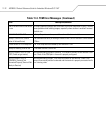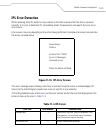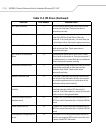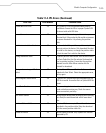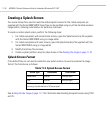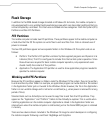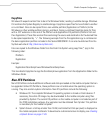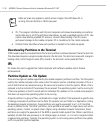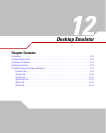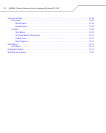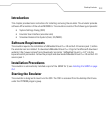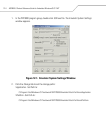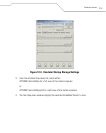
MC9000-G Product Reference Guide for Embedded Windows® CE .NET
11-30
8 bits per pixel only applies to splash screen images. Once Windows CE is
running, the color density is 16 bits per pixel.
• IPL: This program interfaces with the host computer and allows downloading via cradle or
serial cable any or all of the partitions listed above, as well as updated versions of IPL. Use
caution downloading updated IPL versions; incorrect downloading of an IPL causes
permanent damage to the mobile computer. IPL is mandatory for the mobile computer.
• Partition Table: Identifies where each partition is loaded in the mobile computer.
Downloading Partitions to the Terminal
TCM is used to specify a hex destination file for each partition and download each file to the terminal.
This download requires a program loader stored on the terminal. The terminal comes with a program
loading utility, Initial Program Loader (IPL), stored in the terminal's write-protected flash.
IPL
IPL allows the user to upgrade the mobile computer with software updates and/or feature
enhancements.
Partition Update vs. File Update
There are two types of update supported by the mobile computer: partitions and files. The file system
used by the mobile computer is the same as the file system used on a desktop computer. A file is a
unit of data that can be accessed using a file name and a location in the file system. When a file is
replaced, only the contents of the previous file are erased. The operating system must be running for
a file to be updated, so the IPL cannot perform individual file updates as it is a stand-alone program
that does not require the operating system to be running.
A typical partition is a group of files, combined into a single "partition" that represents a specific area
of storage. Examples of partitions are the flash file systems such as Platform or Application. (Using
the desktop computer comparison, these partitions are roughly equivalent to a C: or D: hard disk
drive.) In addition to the "hard disk" partitions, some partitions are used for single items such as the
operating system, monitor, or splash screen. (Again using a desktop computer comparison, these
partitions are roughly the equivalent of the BIOS or special hidden system files.) When a partition is
updated, all data that was previously in its storage region is erased - i.e. it is not a merge but rather
a replacement operation. Typically, the operating system is not running when partitions are update,
so IPL can perform partition updates.



